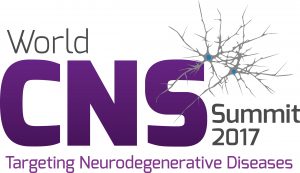Day One
Tuesday 21st February, 2016
Day Two
Wednesday 22nd February, 2016
08.30 Chairman’s Opening Remarks
Improving Translatability from Drug Design to the Clinic
08.40 Animal Models of Parkinson’s Disease: State of the Field & the Future!
Synopsis
- Evaluating standardized phenotypic characterization of rodent models of Parkinson’s disease
- Exploring independent replication of preclinical models using contract research laboratories
- Adding value and utility of preclinical models for researchers seeking to test potential therapeutics targeting alpha-synuclein
09.10 Utilizing Patient Derived iPS cells as a Means to Enhance Translatability
Synopsis
- Understanding how to best apply iPSC modeling to advance drug discovery and development efforts
- What advances have been made in the development of relevant assays using iPSC-derived human neurons
- Exploring the impact of iPSC derived neuron models in supporting the discovery of disease specific therapeutic targets
09.40 Panel Discussion: Where Are We Now - Developing Appropriate Translational Models for Multifactorial Pathology of Neurodegenerative Disease
Synopsis
- Reviewing current pre-clinical models and determining what questions we want these models to answer
- Assessing how we can begin to get more disease relevancy into the pipeline earlier- is the future in in-silico, in-vitro or in-vivo models
- Understanding the limits of our current models and rationalizing whether current mice models are sufficient for translational research
- Questioning the growing chorus to shift away from animal models and exploring whether in-vitro models really replace in-vivo models
- Identifying triggers of disease to better inform disease modeling
- Analyzing the strengths and weaknesses of different pre-clinical modeling systems to advance pre-clinical translation
10:25 Morning Refreshments & Speed Networking
Novel Therapeutic Targets for the Treatment of Neurodegenerative Disease
-
Track A: AD / PD
-
Track B: Orphan Disorders
11.25 Targeting Lysosomal Defects in the Treatment of Parkinson’s Disease: From Genetics to Therapeutics
- Exploring clinical, genetic and experimental evidence that underlies the relevance of lysosomal dysfunction in Parkinson’s disease
- Highlighting the importance of the study of rare diseases as a new paradigm for drug discovery
- Assessing how displaying the stimulation of the lysosomal GBA pathway in the CNS can improve the pathological and behavioral abnormalities in animal models of disease
- Understanding how modulation of this lysosomal pathway may represent a new disease-modifying treatment for GBA-related Parkinson’s disease
Pablo Sardi R&D Director, Sanofi-Genzyme
11.55 Inhibitors of Leucine-rich Repeat Kinase 2 (LRRK2): Progress & Promise for the Treatment of Parkinson’s Disease
- Reviewing the role of LRRK2 in the pathogenesis of Parkinson’s Disease
- Exploring the progress for antisense as therapeutics for CNS disorders
- Illustrating the progress and promise of antisense therapeutics directed at LRRK2 in models of Parkinson’s Disease
Hien Zhao, Senior Scientist, Ionis Pharmaceuticals
12.25 Looking Towards APOE4 for the Treatment of Alzheimer’s Disease
- Examining the need to focus on distinct subpopulations with Alzheimer’s such as APOE4 due to the heterogeneity of the disease
- Assessing how the myriad of suggested APOE4 driven mechanisms is converging towards potential therapies
- Exploring mechanism based anti APOE4 directed therapies in development
Daniel Michaelson, Professor of Neurobiology, Tel Aviv University
11.25 Huntington’s Disease as a Proving Ground for Novel Target & Delivery Strategies
- Spearheading the development of novel biomarkers, targeted therapeutics and delivery methods
- Developing next-generation molecular genetic therapeutics and the methodology to deliver and test them efficiently
- Paving the way for accelerated development of such treatments across neurodegeneration
Edward Wild, MRC Clinician Scientist, UCL Institute of Neurology
11.55 Strategies for the Development of ALS Therapeutics for Novel Targets
- Addressing current challenges in ALS development
- Discussing pre-clinical strategies to improve target selection
- Evaluating clinical strategies to improve ALS trials
Toby Ferguson, Medical Director, ALS innovation, Hub (iHuB) Development Sciences, Biogen
12.25 The Emergence of Gene Therapy for CNS Disease & its Use for Delivering a New Drug Class: A Novel Target that Reveals New Details of Huntington’s Disease Pathogenesis
- Evaluating current gene therapy approaches for CNS disease
- Discussing the use of Intrabodies, intracellular antibody fragments, and their potential advantages in preventing CNS disease progression
- Demonstrating the potential for INT41 as a therapeutic agent in Huntington’s disease by targeting a toxic degradation fragment in the mutant huntingtin protein which interferes with the transport to the nucleus
Lee Henderson, Chief Executive Officer, Vybion Inc.
12.55 Lunch & Networking
Universal Strategies for Approaching Targeting Neurodegeneration
-
Track A: Bioenergetics & Mitochondrial Dysfunction
-
Track B: Neuro-inflammation & Microglial Activation
1.55 The Disease Modifying Effects of a Mitochondrial Specific Protonophore, MP101, a Broad Spectrum Treatment for Insidious Neuromuscular, Neurodegenerative & Developmental Diseases by Modulating Mitochondrial Physiology
- MP101 modulates the entire organelle physiology, improving mitochondrial dysfunction, neuronal survival and behavior in models of Huntington Disease, Rett Syndrome and Duchenne Muscular Dystrophy
- MOA stems from the induction of increased energy expenditure, BDNF expression, lowering ROS production, and remodeling, initiating as a non-genomic
- Since the actions are initially non-genomic vs. a protein pathway and this organelle is highly evolutionarily conserved, there are considerable advantages that predict strong translation, precisely our next step!
John Geisler, Chief Scientific Officer, Mitochon, Pharmaceuticals, Inc.
2.25 Targeting Mitochondrial Dysfunction to Rectify Abnormal Morphology of Myelin & Axon Pathology Associated with MS
- An insight into the role morphological abnormalities of myelin and axonal organelles play in the pathogenesis of axonal injury in demyelinating diseases
- Describing the central role of mitochondria in axonal degeneration and on pathogenesis of MS
Yoshi Bando, Associate Professor, Asahikawa Medical University
2.55 Optic Neuritis as a Model Disease to Examine Novel Neuroprotective Strategies
- Describe clinical features and time course of optic neuritis supporting neuroprotective studies
- Discuss neuronal loss, including oxidative stress, mitochondrial dysfunction and axon degeneration, in animal models of optic neuritis
- Highlight ability of novel therapeutic strategies to reduce oxidative stress, prevent neuronal loss, and preserve neurological function
Kenneth Shindler, Assistant Professor, University of Pennsylvania Scheie Eye Institute
1.55 Can Neuroinflammation Imbalances Provide the Triggers and Mechanisms for Synaptic and Neuronal Loss in Parkinson’s and Alzheimer’s disease?
- Assessing how brain protein and lipid abnormalities can create significant inflammatory pre-conditions to neurodegeneration
- Exploring how signals of inflammatory responses in brain glia and cytokines can be modified by new agents to reduce neurodegeneration and help clearance of pathological stimuli
- Looking to peripheral and central biomarkers related to neuroinflammation, lipid and protein abnormalities to help define diagnostic indices and provide the most precision and impact to human conditions
Ole Isacson, Professor of Neurology and Neuroscience, Harvard Medical School
2.25 Modulating Microglia-Neural Circuit Interactions: Novel Therapeutic Approaches for Targeting Neurological Disorders
- Exploring new roles for microglia in modulating development and plasticity of neural circuits
- Identifying novel molecular mechanisms by which microglia remodel synaptic connectivity
- Translating basic mechanisms by which microglia regulate neural circuit plasticity to neurodegenerative disease
Dori Schafer, Assistant Professor, University of Massachusetts Medical School
2.55 Targeting Innate Immune Cells as a Novel Therapeutic Approach for Neuro-inflammation & Neurodegeneration
- Understanding the pathological role of neuro-inflammation and the immune system in the development of neurodegenerative diseases
- Evaluating the impact of innate immune mechanisms and microglia activation in neurodegeneration
- Identifying CSF-1R as a potential target for therapeutic modulation of CNS innate immune cells for Multiple sclerosis and neurodegenerative diseases
Andrea Edling, Associate Scientific Director, Sanofi
15.25 Afternoon Refreshments & Poster Session
Paving the Way to Preventative Medicine: Novel Therapeutic Approaches Towards Neurodegeneration
-
Track A: Gene, Anti-sense & Other Emerging Therapies
-
Track B: Small Molecule Approaches
4.00 AAV2-AADC Gene Therapy for Parkinson’s Disease: Therapeutic Potential & Surgical Coverage of the Putamen using MRI-Guided Convective Delivery
- Exploring the potential for gene therapy with adeno associated virus 2 (AAV2) carrying the gene for AADC in enhancing dopamine production and improving the response to levodopa in advanced PD
- Displaying the impact of real-time MRI guidance in enabling accurate cannula placement and real-time adjustment to maximize anatomical coverage and delivery of vector to the putamen
- Identifying advances in surgical techniques that have markedly improved vector delivery and increased coverage of the putamen
Brendon Boot, Medical Director, Voyager Therapeutics
4.30 The Potential for Antisense Therapies in Addressing Severe Neurological Disorders such as SMA
- Understanding the potential of the antisense therapies
- Updates from the ENDEAR phase 3 clinical program, and look towards nusinersen in the broader SMA population
Frank Bennet, Senior Vice President, Research Ionis, Pharmaceuticals
5.00 Plasma Derived Therapeutics for Neurodegeneration
- Understanding how the analysis of the plasma proteome in aging has provided two major opportunities to derive therapeutics: plasma fractions and antidotes against aging factors
- Gaining an insight into Alkahest’s controlled clinical studies with young plasma
- Exploring their validated strategies involving plasma fractions, as well as small molecule antagonists against aging factors
Steven Braithwaite, Chief Scientific Officer Alkahest, Inc
4.00 Investigating the Efficacy & Safety of Verubecestat in Alzheimer’s Disease Patients
- Exploring the discovery of verubecestat and its clinical status for AD
- Looking forward to the next generation of BACE inhibitors and identifying strategies for their application
Matthew Kennedy, Director, Neuroscience, Merck
4.30 Development of a Small Molecule Alpha- Synuclein Stabilizer for the Treatment of Parkinson’s Disease
- Oligomeric forms of alpha synuclein are toxic and likely contribute to the pathology and progression of Parkinson’s disease (PD)
- Exploring several rational approaches to treading PD: prevent formation, enhance clearance, reduce toxic consequences of these aggregates
- Presenting the story of the discovery and validation of a molecule that prevents the formation of a particularly toxic form of alpha synuclein aggregate
Doug Bonhaus, Interim CEO, Neuropore
Targeting Pre-mRNA Splicing With Small Molecules for the Treatment of Neuromuscular Disorders
- The potential of small molecules for therapeutic targeting of pre-mRNA splicing
- Targeting alternative splicing of SMN2 exon 7 for treatment of spinal muscular atrophy
- Targeting alternative splicing of exon 20 in mutant IKBKAP gene for treatment of familial dysautonomia
Nikoli Naryshkin, Senior Director, Biology – Genetic, Disorders, PTC Therapeutics, Inc





